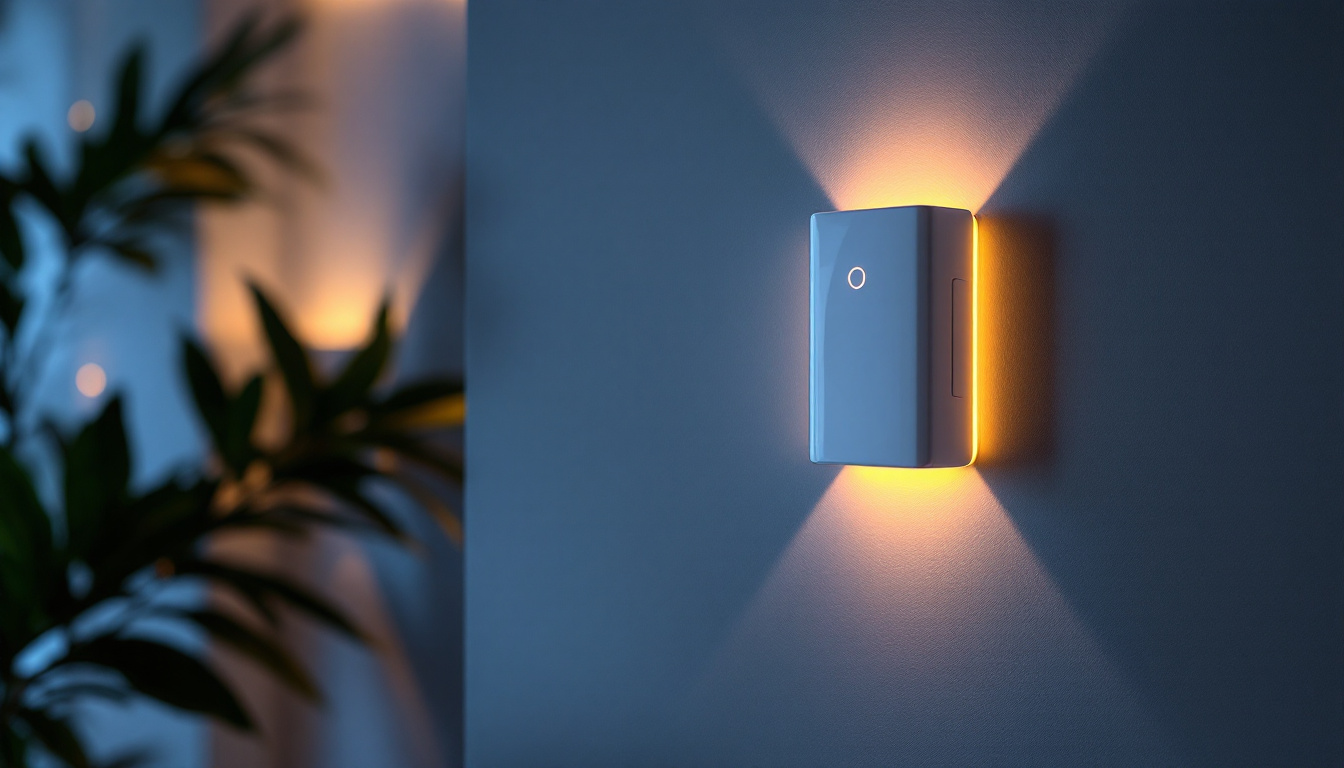
Outdoor LED solar lanterns have revolutionized the way lighting contractors approach outdoor illumination. These innovative lighting solutions not only enhance the aesthetic appeal of outdoor spaces but also offer energy efficiency and sustainability. This comprehensive handbook aims to equip lighting contractors with the knowledge and insights needed to successfully incorporate outdoor LED solar lanterns into their projects.
Outdoor LED solar lanterns are designed to harness solar energy, converting it into light through the use of LED technology. They are ideal for various applications, including gardens, pathways, patios, and commercial spaces. Understanding their components, functionality, and benefits is crucial for lighting contractors looking to expand their offerings.
Solar lanterns typically consist of several key components: the solar panel, battery, LED light source, and the lantern housing. The solar panel collects sunlight during the day, converting it into electrical energy stored in the battery. When the sun sets, the LED light source is powered by the stored energy, illuminating the surrounding area.
Many modern solar lanterns also feature built-in sensors that automatically turn the lights on at dusk and off at dawn. This automation not only enhances convenience but also maximizes energy efficiency, ensuring that the lanterns operate only when needed. Some advanced models even include motion sensors that activate the light when movement is detected, providing an added layer of security for outdoor spaces.
The operation of outdoor LED solar lanterns is straightforward yet effective. During daylight hours, the solar panel absorbs sunlight, which is then converted into electricity. The battery stores this energy, allowing the lantern to function during the night. The efficiency of this process depends on several factors, including the quality of the solar panel, the capacity of the battery, and the intensity of sunlight received.
Contractors should consider the geographic location and typical weather conditions when recommending solar lanterns to clients. Areas with abundant sunlight will yield better performance, while regions with prolonged cloudy periods may require lanterns with larger batteries or enhanced solar panels. Additionally, the orientation of the solar panels plays a significant role; positioning them to maximize sun exposure can greatly improve their overall efficiency and longevity.
One of the most significant advantages of outdoor LED solar lanterns is their energy efficiency. By utilizing renewable solar energy, these lanterns reduce electricity costs and minimize the carbon footprint associated with traditional lighting solutions. This eco-friendly approach aligns with the growing demand for sustainable practices in construction and landscaping.
Additionally, solar lanterns are often easier to install than traditional lighting systems. Without the need for extensive wiring or electrical connections, contractors can save time and reduce labor costs. This simplicity makes solar lanterns an attractive option for both residential and commercial projects. Furthermore, many solar lanterns are designed with durability in mind, featuring weather-resistant materials that can withstand various environmental conditions, ensuring they remain functional and aesthetically pleasing for years to come.
Moreover, the versatility of solar lanterns allows for creative design possibilities. They come in various styles, colors, and sizes, enabling homeowners and businesses to choose options that complement their outdoor decor. From elegant, vintage-inspired designs to sleek, modern aesthetics, solar lanterns can enhance the ambiance of any space while providing practical lighting solutions. This adaptability not only meets functional needs but also elevates the overall visual appeal of gardens, walkways, and outdoor entertainment areas.
Selecting the appropriate solar lanterns for a project involves several considerations. Lighting contractors must evaluate the specific needs of their clients, including the desired brightness, design aesthetics, and installation environment.
When choosing solar lanterns, it is essential to consider the brightness level, typically measured in lumens. The required lumens will vary depending on the application; for instance, pathways may require lower lumens for ambient lighting, while security lighting may necessitate higher outputs. Understanding the lumen output of various models will help contractors make informed recommendations.
For residential applications, solar lanterns with a lumen output of 100 to 300 are often sufficient, while commercial projects may demand lanterns that produce 500 lumens or more. It is crucial to assess the specific lighting needs of each project to ensure optimal performance.
The design of solar lanterns plays a significant role in their integration into outdoor spaces. Contractors should consider the architectural style and landscaping of the area when selecting lanterns. Options range from traditional designs to modern, sleek styles, allowing for versatility in various settings.
Furthermore, the color temperature of the LED lights can impact the ambiance of the space. Warm white light (around 2700K) creates a cozy atmosphere, while cool white light (around 5000K) offers a more contemporary feel. Matching the color temperature to the intended use of the space is essential for achieving the desired effect.
While solar lanterns are generally easy to install, certain factors must be taken into account to ensure optimal performance. The location of the solar panel is critical; it should be positioned to receive direct sunlight for the majority of the day. This may require strategic placement away from trees or structures that could cast shadows.
Additionally, contractors should consider the height and angle of the lanterns. Proper positioning can enhance visibility and create a more inviting atmosphere. For pathways, lanterns should be installed at a height that provides adequate illumination without being obtrusive.
Although outdoor LED solar lanterns require minimal maintenance, regular care can extend their lifespan and ensure optimal performance. Lighting contractors should educate clients on the best practices for maintaining their solar lanterns.
Dust, dirt, and debris can accumulate on solar panels, reducing their efficiency. Regular cleaning is essential to ensure that the panels can absorb maximum sunlight. A simple wipe with a damp cloth or sponge can often suffice, but contractors should advise clients to avoid harsh chemicals that could damage the panel.
In addition to cleaning, it is advisable to check for any obstructions that may cast shadows on the solar panels. Overhanging branches or nearby structures should be monitored and trimmed as necessary to maintain optimal sunlight exposure.
The battery is a critical component of solar lanterns, and its longevity can significantly impact the overall performance of the lighting system. Most solar lanterns use rechargeable batteries, which may need replacement after a few years of use. Contractors should inform clients about the signs of battery deterioration, such as dimming lights or reduced operating time.
It is also important to ensure that the battery compartment is kept clean and free from moisture. Regular inspections can help identify potential issues before they become significant problems, ensuring that the lanterns continue to function effectively.
Seasonal changes can affect the performance of solar lanterns. In winter months, shorter daylight hours may result in reduced charging time, potentially leading to dimmer lights at night. Contractors should advise clients on how to optimize their solar lanterns during these periods, such as relocating them to sunnier spots or considering models with larger battery capacities.
In addition, during extreme weather conditions, such as heavy snow or storms, it may be beneficial to temporarily remove or cover solar lanterns to protect them from damage. Educating clients about these seasonal considerations will help them maintain their solar lighting systems effectively.
The field of solar lighting technology is continually evolving, with new innovations enhancing the functionality and efficiency of outdoor LED solar lanterns. Staying informed about these advancements can provide lighting contractors with a competitive edge in the market.
Recent developments have led to the emergence of smart solar lanterns, which integrate with home automation systems. These lanterns can be controlled remotely via smartphone apps, allowing users to adjust brightness levels, set timers, and even change color temperatures. This added functionality appeals to tech-savvy clients seeking modern solutions for their outdoor spaces.
Moreover, smart solar lanterns often include motion sensors that activate the lights when movement is detected, enhancing security and energy efficiency. Contractors should consider recommending these advanced options to clients looking for innovative lighting solutions.
Advancements in battery technology have also contributed to the improved performance of solar lanterns. Lithium-ion batteries, for instance, offer higher energy density and longer lifespans compared to traditional lead-acid batteries. These batteries charge faster and provide consistent power output, making them an excellent choice for solar lantern applications.
Contractors should stay updated on the latest battery technologies to offer clients the most efficient and reliable solar lantern options available.
Another trend in solar lantern technology is the integration of multiple lighting solutions into a single unit. Some solar lanterns now combine ambient lighting with task lighting, allowing for versatile use in various outdoor settings. This multifunctionality can be particularly appealing for commercial projects where different lighting needs must be met.
By understanding these innovations, lighting contractors can better serve their clients and provide cutting-edge solutions that enhance outdoor spaces.
Outdoor LED solar lanterns represent a significant advancement in outdoor lighting technology, offering energy efficiency, aesthetic appeal, and ease of installation. For lighting contractors, understanding the components, benefits, and innovations associated with these lanterns is essential for successfully integrating them into projects.
By considering factors such as brightness, design, installation, and maintenance, contractors can provide tailored recommendations that meet the unique needs of their clients. As the demand for sustainable lighting solutions continues to grow, embracing outdoor LED solar lanterns will not only enhance project offerings but also contribute to a greener future.
Ultimately, by staying informed about the latest trends and technologies in solar lighting, lighting contractors can position themselves as industry leaders, ready to meet the evolving needs of their clients.
Ready to elevate your lighting projects with the efficiency and elegance of outdoor LED solar lanterns? Look no further than LumenWholesale for all your lighting needs. We provide contractors with high-quality, specification-grade lighting products at unbeatable wholesale prices. Our extensive selection not only meets but exceeds industry standards, ensuring you have access to reliable and high-performance lighting solutions. Plus, with free shipping on bulk orders, you can enjoy premium lighting at the best value — without any hidden fees. Make the smart choice for your business and visit LumenWholesale today to experience the perfect blend of quality, affordability, and convenience.

Discover the top five reasons why lighting contractors should prioritize different types of fluorescent lights.

Explore how flood lights are transforming modern home lighting solutions with their versatility and efficiency.

Discover the innovative strategies smart lighting contractors use with Sensor Switch Motion Sensors to enhance energy efficiency and convenience.

Discover the often-overlooked aspects of outdoor light fixtures that even seasoned lighting contractors might miss.